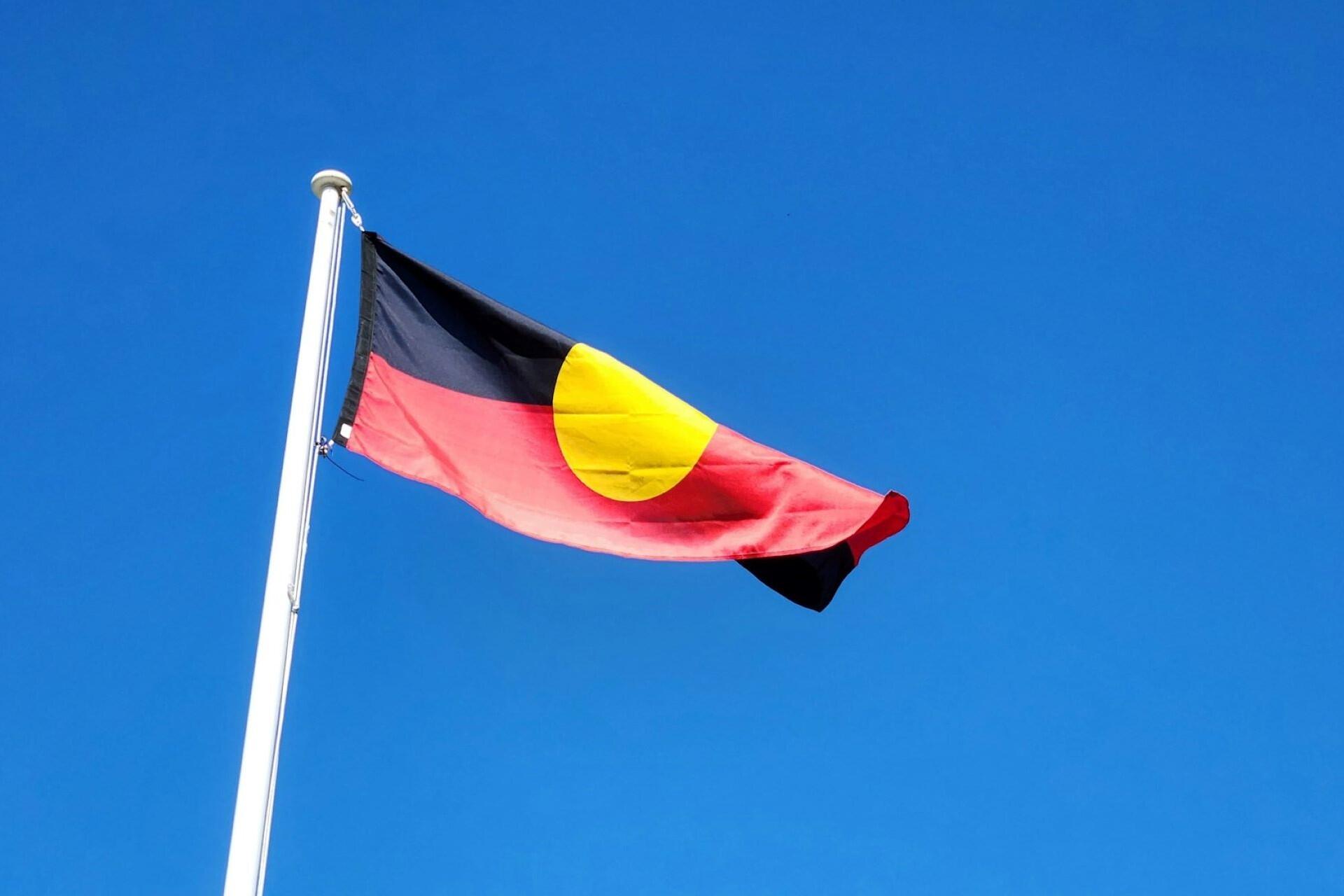Aboriginal history in Australia spans approximately 50,000 to 65,000 years. First Nations Australia are one of the oldest living cultures on earth, and its history is long and complex. We're never going to accurately cover it all here in this short article, but we'll look at the deep time story, the diversity of nations and languages, the impact of colonisation, as well as the efforts to preserve rights, heritage, and identity, giving you a good starting point to explore the topic further.

Deep Time History of Australia: Arrival and Early Settlement
When it comes to Aboriginal history, Australia has tens of thousands of years of it. There's evidence showing that the First Nations peoples of Australia have lived on the continent for between 50,000 and 65,000 years. This makes them one of the oldest continuous cultures in the world.
Archaeological discoveries at the Madjedbebe rock shelter in the Northern Territory include tools, ochres, and cultural artefacts from at least 65,000 years ago, which confirms the deep time history of Australia.
At Madjedbebe in Northern Territory, archaeologists have uncovered ground-edge axes, pigments, grinding stones, and plant remains dating back at least 65,000 years, making it Australia’s oldest documented human settlement, offering deep insights into technology, diet, and adaptation over millennia
Early Aboriginal peoples, including the ancestors of today's Indigenous and Torres Strait Islander communities, likely arrived via sea crossings from Southeast Asia. They settled everywhere from the tropical north to the south coast. These people adapted to the land, climate, and changing sea levels, developing sophisticated technologies, social structures, and sustainable practices.
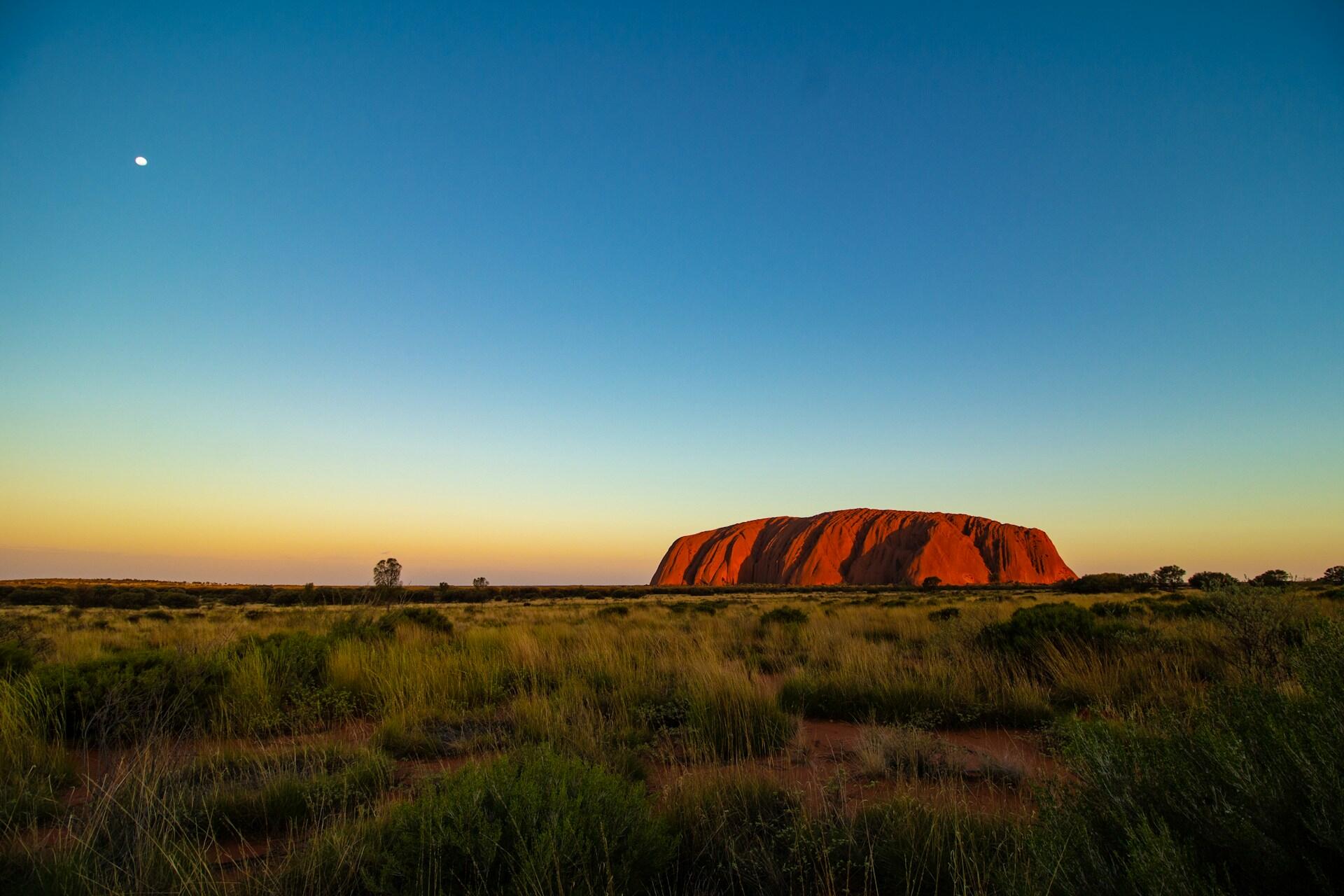
Sites like Lake Mungo in New South Wales which is home to the remains known as Mungo Man and Mungo Lady. These are some of the earliest known evidence of ritual burial and cremation anywhere in the world, dating back over 40,000 years, and are an excellent example of the spiritual complexity of Aboriginal Australians long before colonial contact. An important part of Australian history.
Culture, Story, and Knowledge Systems
As for Aboriginal history, Australia has plenty of artefacts. However, it's also worth considering how indigenous peoples thought, with the complex cultural systems that preserve knowledge, law, and identity. The Dreaming (also known as the Dreamtime) is central to this. This spiritual framework explains the creation of the land, waterways, animals, and people. The Dreaming isn't just a set of ancient stories, but a living philosophy that guides daily life, relationships, and responsibilities in the Country.
Songlines trace the journeys of ancestors across the continent, map sacred places, and embed ecological, navigational, and historical knowledge into music, dance, and visual art. These are oral traditions that are passed down through family and community connections to ensure that cultural memory survives without written records.
The Dreaming, or Dreamtime, is not just ancestral storytelling, but a living philosophy that guides governance, relationships, and environmental care across First Nations communities through law, song, ceremony, and a connection to Country.
Across First Nations Australia, there were over 300 distinct languages and dialects, each linked to a specific nation and territory. From the Western Desert to the Torres Strait and the south coast, ceremonial gatherings would reinforce social bonds and shared law. Specialised cultural practices, such as weaving, carving, and painting, were examples of the deep ties to the land and its resources, unlike the diggers during the gold rush.
Nowadays, Aboriginal and Torres Strait Islander communities continue to uphold these traditions, as well as newer forms of cultural expression. Art centres, university programmes, and cultural archives are all key to preserving and teaching the values, rights, and heritage of Aboriginal Australians.
Language, Nations, and Communities
Though often spoken of in a monolithic sense, when we think of Aboriginal History, Australia is not a hegemony. Instead, hundreds of distinct nations, peoples, and communities called the continent home in its tens of thousands of years of history. Although postwar immigration made Australia multicultural, before colonial contact, there were over 250 languages and 600 dialects spoken across the continent.
were spoken across Australia. Today, only 123 remain, with 31 actively being revived.
At the time of colonisation, over 250 languages were spoken across Australia. Today, only 123 remain, with 31 actively being revived.
Each of these languages and dialects was tied to specific land and territories, acting as a means of communication while also encoding cultural knowledge, spiritual beliefs, and social responsibilities.
The tropical north of the Northern Territory, the islands of the Torres Strait, the deserts of Western Australia, the grasslands of Queensland, the mountains of Victoria, and the coastlines of New South Wales and South Australia all had unique ways of living and relating to the country. These diverse communities were connected through seasonal movements and trade networks. They shared ceremonial gatherings, allowing them to exchange resources, art, and ideas.
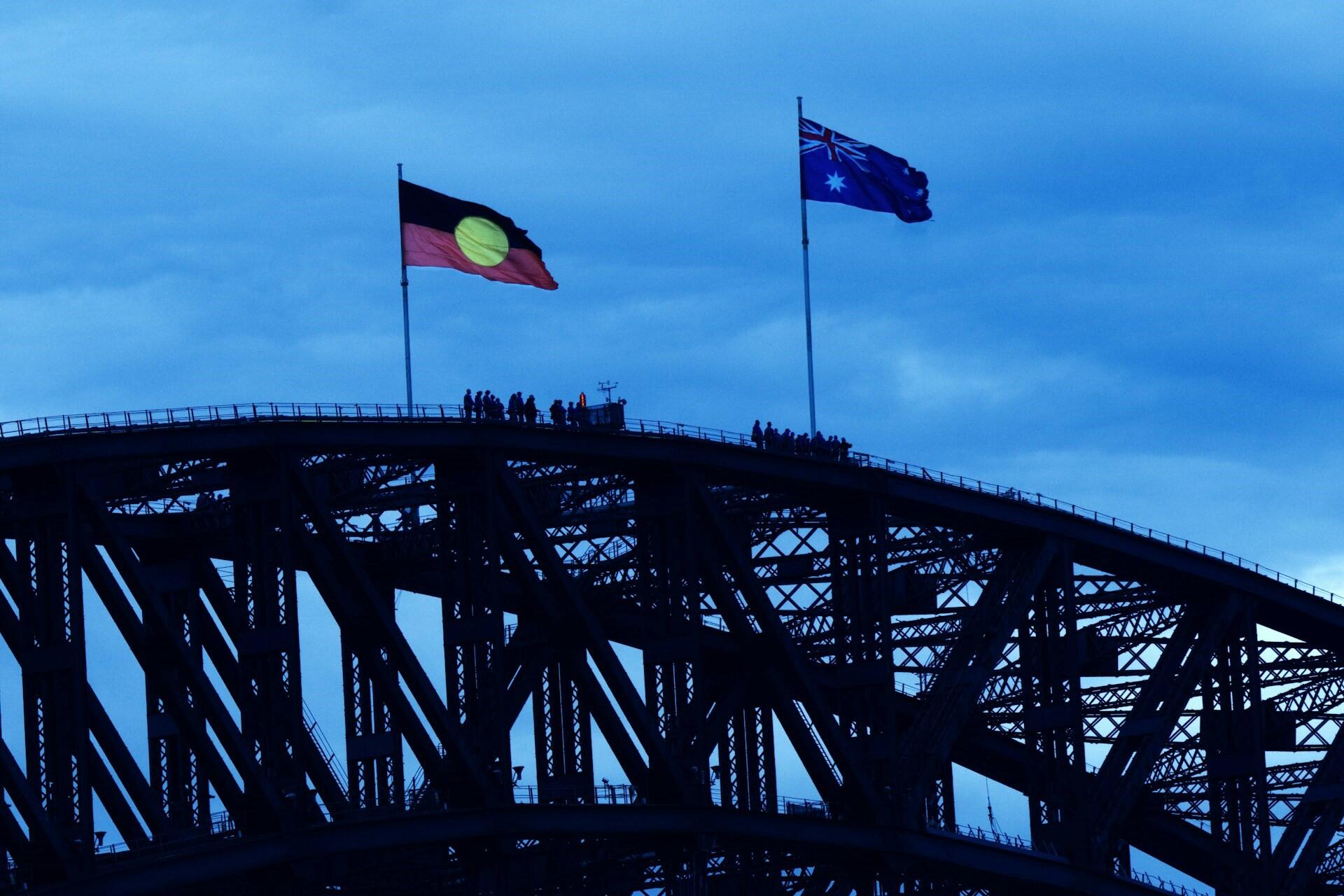
In indigenous society, family and kinship systems defined roles, marriage rules, and obligations. Cultural stories, land management practices, and native rights were preserved and passed on to future generations through these systems.
Many traditional languages have been endangered by historical policies and the pressures of modern life, as well as revitalisation efforts. Many Aboriginal elders, cultural centres, and university programmes have helped sustain some of the linguistic diversity as well as the bonds between communities and their ancestral lands.

Custodianship of Land and Country
For Aboriginal and Torres Strait Islander peoples, land is more than just a physical space; it is a spiritual and cultural connection. Land is a living entity that holds stories, law, cultural identity, and, perhaps most importantly, the spirits of the ancestors. In Aboriginal history, Australia isn't owned by the people, but instead looked after by the people who live on it. Indigenous law dictates that each nation and community has a responsibility to care for the territory, ensuring it's healthy for future generations.
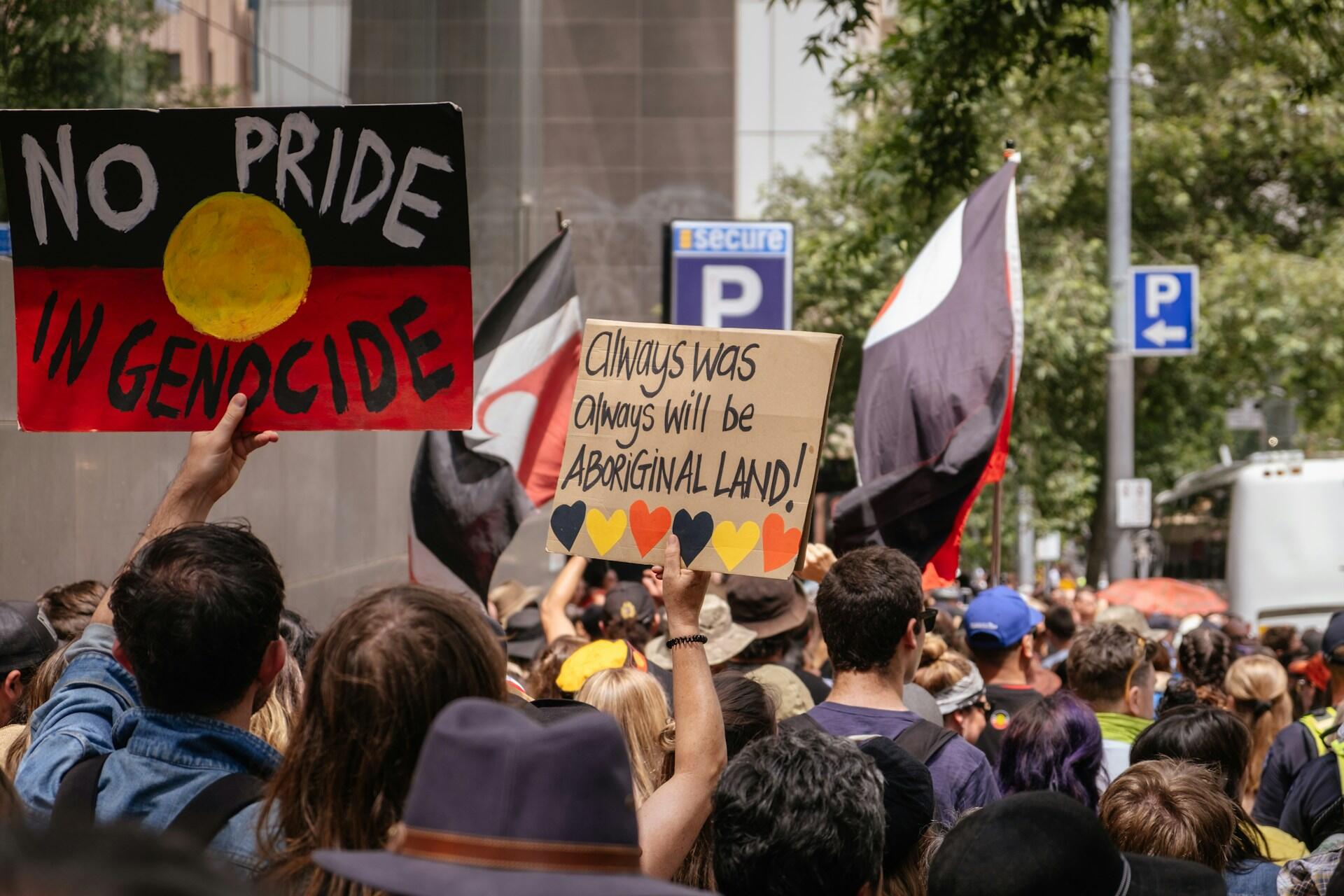
Traditional land management practices were refined over thousands of years, including controlled burning to promote plant growth and reduce wildfire risk, the careful harvest of resources, and seasonal movement to allow ecosystems to regenerate. These practices are often passed down through family and ceremonial gatherings.
As you can imagine, colonial expansion significantly disrupted many of these practices, with Aborigines being displaced and their cultures and practices suppressed. Many communities have fought to maintain connections to Country through both the physical return to ancestral places and through ceremony, song, and native title claims.
Aboriginal and Torres Strait Islander Australians are also playing a leading role in environmental stewardship. Fire management and other sustainable practices have been revitalised thanks to partnerships between governments, communities, and academic institutions, recognising the value of ancient knowledge in addressing contemporary environmental challenges across Australia.
Contact, Colonial History, and Frontier Conflict
The arrival of the First Fleet in 1788 was a turning point in Aboriginal history. Initial encounters between Aboriginal peoples and the British were characterised by cautious exchanges, with food and information being exchanged. As colonial settlement expanded into Indigenous lands, tensions soon escalated. The idea of land as property conflicted with the Aboriginal understanding of Country, which was a shared spiritual and cultural landscape.
Within just a few years, disease, displacement, and violence devastated communities. Smallpox and influenza, as well as the loss of hunting grounds and resources, led to a decline in Aboriginal Australian populations. There was resistance across the continent, with warriors like Pemulwuy in New South Wales and conflicts in Queensland, Victoria, and the Northern and Western frontiers.
The period that historians tend to call the Frontier Wars saw hundreds of violent clashes between settlers, police, and Aboriginal people defending their territories. Historical studies, oral histories, and archives have provided us with a good idea of the scale of these massacres, which were often omitted from government records.
In the Torres Strait and the north, contact took place later. The expansion of the pearling and fishing industries led to Indigenous labour being exploited. Communities were significantly disrupted, but despite this, many nations maintained cultural continuity through family ties, ceremonies, and by adapting to changing conditions.
1788
First Fleet Arrives: Initial Contact
British colonisers landed at Port Jackson, initiating profound disruption, displacement, and disease across First Nations lands.
1967
Constitutional Referendum Passed
Over 90% of Australians voted to include Aboriginal people in the census and allow federal laws for Indigenous communities.
1992
Mabo Decision & Native Title Recognised
The High Court overturned terra nullius and acknowledged native title, reshaping Australian jurisprudence and land rights.
Preservation, Rights, and Reconciliation
Aboriginal and Torres Strait Islander peoples have worked tirelessly to preserve their cultural heritage, protect Country, and reclaim rights to land and resources. The struggle for recognition in the face of colonial disruption is central to their history and can't be ignored.
One of the first significant milestones in their Civil Rights movement was the 1967 Referendum, when over 90% of Australians voted to amend the national constitution, allowing the government to make laws for Aboriginal people and include them in the census. The Mabo decision of 1992 overturned the doctrine of terra nullius, recognising native title in Australia.
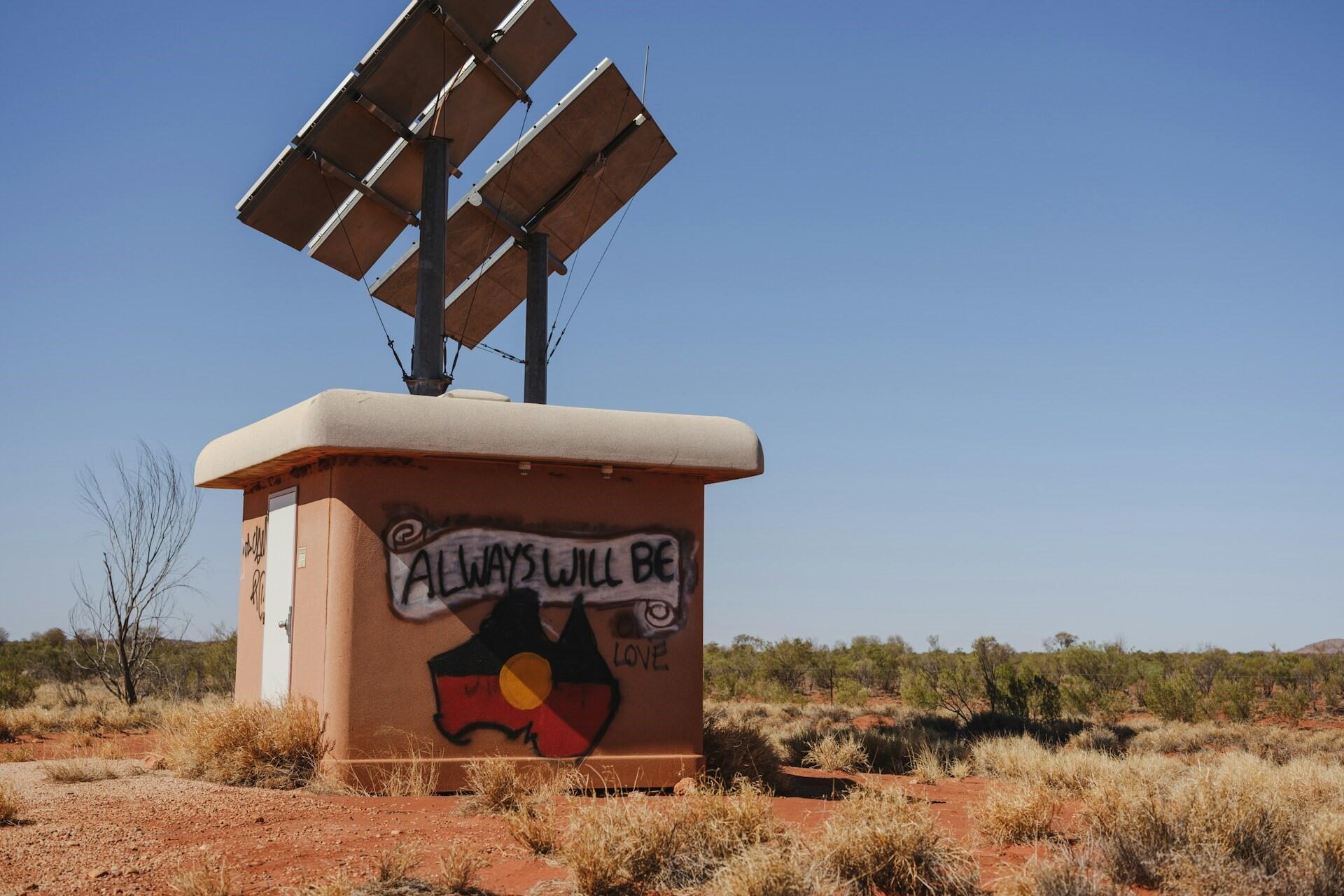
Reconciliation is still ongoing, but there are national events, such as National Reconciliation Week and NAIDOC Week, which celebrate the achievements and resilience of Aboriginal people, encouraging all Australians to acknowledge the truth about their history. Social activism, cultural revival, and collaboration are helping communities reclaim their voice in the nation's story.
Continuity, Resilience, and the Future
Aboriginal and Torres Strait Islander peoples have lived, adapted, and thrived in Australia for tens of thousands of years, but despite this, have been disrupted by colonial settlement, dispossession, and an attempted erasure of their culture, despite many fighting for Australia in war. The ongoing preservation of languages, stories, and cultural practices is a testament to the resilience of the world's oldest continuous civilisation.
As we advance, respectful engagement, truth-telling, and recognising the profound contributions of Aboriginal and Torres Strait Islander Australians is essential. The future has to be grounded in respect, justice, and the enduring spirit of the First Peoples of Australia.

